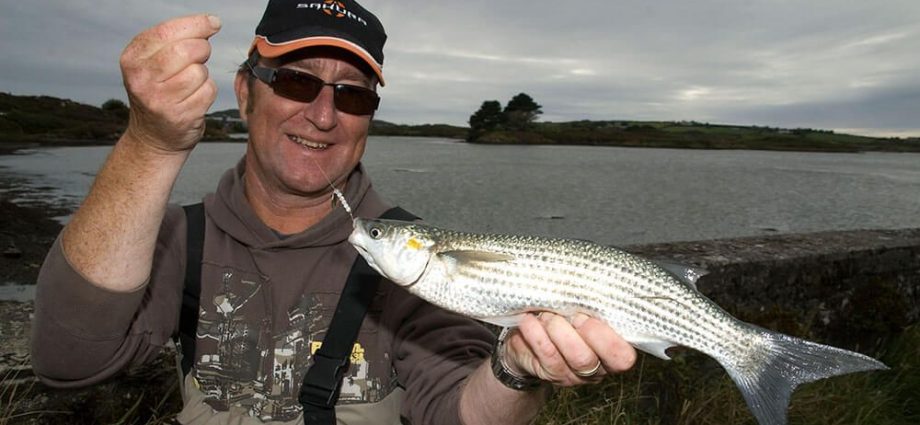Contents
Mullet is a monotypic order, which includes 18 genera and 81 species. Most species are thermophilic. Mullets have a squared, elongated body, covered with large scales, capturing the head as well. The structure of mullets has several features, they belong to fish with a closed swim bladder and a complex digestive system, which is associated with the lifestyle and ecological niche that fish occupy in nature. The mouth is small, in many species, with thick, leathery lips. By the way of feeding, mullets differ from most fish species, which are representatives of the ichthyofauna of the coastal zone of the seas. The main food of these fish is detritus – dead parts of plants and animals, partially mineralized, organic films on the bottom surface, and so on. Less commonly, fish feed on benthos – bottom animals. All mullets are pelargic fish, very mobile, leading a schooling lifestyle. Fish live in the coastal zone of the seas, often in the brackish waters of estuaries and lagoons. There are species that prefer the fresh waters of the lower reaches of the rivers. Due to the way of feeding, mullets almost never become food competitors to other species, therefore, there are positive results in acclimatization in coastal areas of the seas and enclosed reservoirs. In the Caspian Sea, the universe of mullet is known under the name – singil. Here it is worth mentioning the pilengas, the sea mullet of the Pacific basin, which was successfully introduced into the Azov – Black Sea region. The natural habitat covers the tropical and subtropical zone.
Methods for catching mullet
Mullets are considered a tasty and healthy fish; in many regions, industrial production is carried out with net gear. Among amateur anglers, fish is also a very favorite object of fishing. The most successful fishing methods are numerous specialized rigs using bottom, float rods using natural baits. Mullets, depending on the species and region, more or less actively react to spinning baits, as a rule, these are small spinners.
Fishing with a float rod
On float gear, most often, mullets are caught in shallow bays, lagoons and rivers. Float tackle is used in various ways, including for fishing from the surface or with a small depth. For this, special tools have been developed. It is important to note that mullets are very shy, and successful fishing, despite the outward simplicity of gear, requires certain skills. Features of using float gear for catching mullets depend on the fishing conditions and the experience of the angler. For coastal fishing for mullet, rods for “deaf” equipment 5-6 m long are usually used. Match rods are used for long-distance casting. The choice of equipment is very diverse and is limited by the conditions of fishing. As in any float fishing, the most important element is the right bait and bait.
Catching mullet on the bottom gear
Mullets respond to bottom gear, in the presence of certain, special equipment. The main element is bright, pop-up montages, where the hooks rise above the bottom. In some cases, spot lure can be very useful, therefore, along with ordinary bottom rods, it is quite possible to use feeder rigs, which are convenient for most, even inexperienced anglers. They allow the fisherman to be quite mobile on the pond, and because of the possibility of point feeding, quickly “collect” fish in a given place. Feeder and picker, as separate types of equipment, currently differ only in the length of the rod. The basis is the presence of a bait container-sinker (feeder) and interchangeable tips on the rod. The tops change depending on the fishing conditions and the weight of the feeder used. Nozzle for fishing can be any nozzle, both vegetable or animal origin, and paste. This method of fishing is available to everyone. Tackle is not demanding for additional accessories and specialized equipment. This allows you to fish in almost any water bodies. It is worth paying attention to the choice of feeders in shape and size, as well as bait mixtures. This is due to the conditions of the reservoir (river, bay, etc.) and the food preferences of local fish.
Baits
Mullet is caught with a variety of plant and animal lures, depending on local fish preferences. From the surface, the mullet pecks, even on the crust of bread. In the variant of fishing on the sea coast, sea worms and so on are more often used. Various, even unusual ingredients are used for feeding. Along with vegetable baits, shellfish and fish meat is used.
Places of fishing and habitat
Mullets are widely distributed in the warm waters of the oceans. The habitat also captures the temperate zone. The fish does not go far into the sea, so it should be caught near the coastline. Especially many species live in the Indo-Pacific region. For European Russia, the most interesting region for catching mullet is the Azov-Black Sea. There are known cases of catching fish in the Baltic, but this is rather an exception.
Spawning
The maturation of fish occurs at 6-8 years of age. Spawning takes place during the warm season. In the Mediterranean-Black Sea region: in June-September. Spawning takes place on heated sandy spits. Pelargic caviar.










